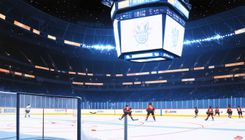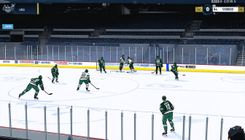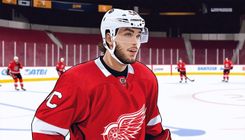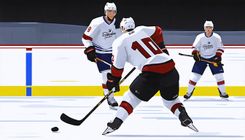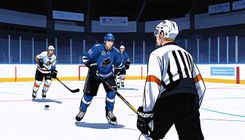NHL Collective Bargaining Agreement: A New Development Path for Young Prospects

The current NHL collective bargaining agreement (CBA) is set to expire in September 2026, a situation that elicits concern for those familiar with the league's history. However, the NHL owners and the NHL Players Association reached an agreement this summer regarding the framework of a new deal. While the full Memorandum of Understanding has not yet been made public, NHL insider Frank Seravalli has highlighted a notable change in the new CBA: each NHL team will be permitted to assign one 19-year-old prospect to their AHL team each season, potentially impacting a maximum of 32 players annually.
At first glance, the ability for teams to assign one prospect does not seem extensive, but the ramifications for the development of NHL prospects could be substantial. Under the existing CHL-NHL agreement, players drafted from major junior leagues in Canada—namely the OHL, WHL, or QMJHL—cannot be relegated to the AHL or ECHL until they either reach 20 years of age or complete four seasons in the CHL. Players drafted from other junior leagues who later play in the CHL are exempt from this stipulation. The new CBA will take effect in the 2026-2027 season, meaning it could first impact players born in 2007. For instance, Vancouver Canucks prospect Braeden Cootes will turn 19 in February 2026 and might be assigned to the Abbotsford Canucks in the fall, should the Canucks’ management deem it necessary for his development.
This age-based rule signifies a departure from the previous draft year stipulation, allowing newly drafted CHL players who turn 19 shortly after the draft to bypass a return to junior hockey. One such example is top prospect Ryan Roobroeck, born in September 2007. If he signs his entry-level contract (ELC) immediately and participates in his NHL team's development camp, he could be directly assigned to the AHL instead of returning to the Niagara IceDogs in the OHL. This change signifies a critical development avenue for certain players who previously found themselves in a limbo of sorts—too skilled for junior leagues but not yet ready for the NHL. Recent cases illustrate this point, as Cole Perfetti was able to compete at the AHL level during the pandemic after his major junior season was canceled, while Shane Wright received an exception to play with the AHL's Coachella Valley Firebirds due to his unique circumstances.
The specific language from NHL insiders indicates that the new rule allows for 'one player per organization per season.' It is likely that teams will not have the ability to temporarily assign one 19-year-old, recall them, and then assign another, thereby curtailing any attempts to exploit this framework. It is worth noting that teams typically do not have an abundance of 19-year-old prospects in the CHL clamoring to take on a more challenging developmental path. Consequently, this initiative should provide NHL teams with an opportunity to monitor their top prospects more closely while facilitating direct development. On the other hand, CHL teams may find this arrangement less advantageous, considering that this one-player limit was likely influenced, at least in part, by the CHL's interests. The NHL teams can only assign one player per year, but no restrictions exist on the number of players that can be taken from each CHL franchise, creating potential challenges for teams rich in talent.
This development could present a hurdle for junior leagues, a situation compounded by the recent changes regarding the CHL to NCAA pathway. It remains to be seen how recent governmental actions concerning NIL regulations may influence a player's decision to pursue those opportunities instead of returning to junior hockey. The introduction of this new developmental pathway means that elite CHL players could bypass the uncertainty of either returning to a junior league or not being ready for the NHL, allowing them to transition into professional hockey a year earlier. This approach encourages players to confront real challenges and continue to refine their skills at a competitive level, instead of being sidelined in the NHL or dominating junior leagues, which could stagnate their growth.
The OHL's London Knights represent an excellent example of a program that could greatly benefit from this new trajectory, despite potential criticism for stating so. As a consistently dominant team, the Knights often produce exceptional talent; however, their players may miss out on the valuable experiences that come with overcoming adversity. NHL teams may opt to transfer their top 19-year-old prospects out of the comfort of the Knights' winning culture and into the more competitive environment of the AHL. Additionally, there could be unintended benefits to this new rule. According to Scott Wheeler of The Athletic, several agents have indicated that many players would prefer the CHL-to-AHL route—especially if it includes an ELC signing bonus—over returning to the NCAA system. There is a growing sentiment among players seeking alternatives to college and an eagerness to avoid returning to school.
Moreover, when considering the implications of the new CBA language, some players could potentially secure arbitration rights a year earlier by making the leap to the AHL at 19, presenting them with a significant advantage that NHL teams may find disconcerting. The combination of guaranteed signing bonuses and salaries in the AHL further solidifies its appeal, allowing players to avoid the uncertainties associated with NCAA eligibility and possible NIL money. As the landscape continues to evolve, the choice between the CHL and AHL will likely become even more enticing, particularly for players eager to make their mark in professional hockey.

